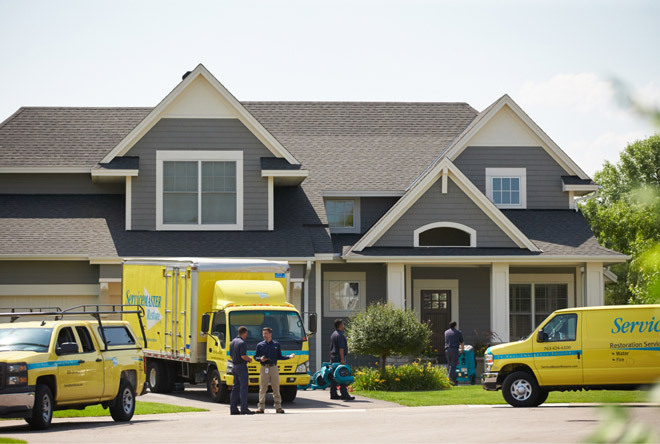Cleaning and Disinfecting of COVID-19
Working with experts in the field of environmental science and in conjunction with our in-house environmental remediation experts, ServiceMaster Restoration Services has developed preventative baseline cleaning and decontamination protocols and standard operations practices related to the COVID-19 virus. To best meet our customer's needs we have developed two areas of operating procedures. One set of protocols addresses any preventative cleaning needs for facilities at a heightened risk of infection or looking to take proactive measures to protect their customers, residents or patrons. The second set of standard operating procedures relates to any facility that believes it has been exposed to the COVID-19 virus or has a confirmed case of the coronavirus. Developing two sets of procedures helps us maximize the effectiveness of the cleaning or decontamination while reducing any unnecessary cost.
Both our preventative cleaning and decontamination protocols involve not only specific requirements for cleaning, but also the disinfectants and decontamination systems to be used. In addition, we utilize strict personal protective equipment (PPE) standards for all employees throughout the entire process.
What is Coronvirus?
Coronavirus 2019-nCoV, more commonly referred to in the media as the coronavirus or COVID-19, is a respiratory virus first identified in Wuhan, China suspected to have originated in a large animal and seafood market. Coronaviruses are a large family of viruses, some of which affect humans while others affect animals only. Severe Acute Respiratory Syndrome (SARS) is a different type of Coronavirus but is NOT the same as what is now being generally labeled “the Coronavirus”
How Does The Coronavirus Spread?
While we are still learning more about the new COVID-19 virus, scientists believe the virus will act similar to other more well-known Coronaviruses such as MERS or SARS. It is believed that the coronavirus spreads from person-to-person when in close proximity to each other. The standard accepted distance is about six feet. The virus is spread much like the flu by an infected person coughing or sneezing. This introduces tiny respiratory droplets that can enter a non-infected person’s mouth, nose or be inhaled into the lungs. As with other respiratory viruses, individuals are typically considered to be most contagious when they are demonstrating the greatest level of symptoms.
What are the symptoms of the coronavirus?
While the intensity of symptoms varies, with some individuals showing little or no symptoms and others demonstrating severe illness and even dying, the three main symptoms include;
- Fever (Above 101º F)
- Cough
- Shortness of breath
These symptoms may begin showing within two days of being exposed but may take as long as 14 days


